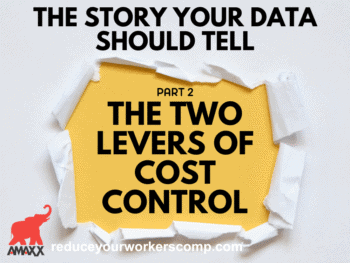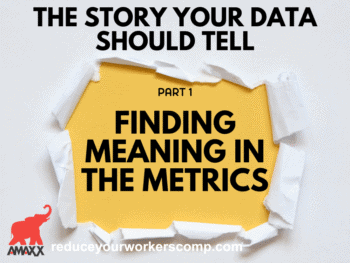If you are not benchmarking your workers’ compensation financial results, you probably are not seeing much improvement in the financial area. As the old saw goes, “what gets measured gets results?”
Most companies are aware of the benefits of benchmarking and apply benchmarking criteria to the design of new products or manufacturing of products. Many companies use financial benchmarking to insure they continue to grow and prosper. Let’s take financial benchmarking beyond measuring growth in product sales or net financial income, and apply benchmarking to your workers’ compensation claims.
It does not matter if you use financial benchmarking for your in-house adjusters, the TPA’s adjusters or the insurer’s adjusters. You can use benchmarking to measure and evaluate the effectiveness of individual adjusters, individual adjusting offices, or the entire adjusting staff. It is an excellent way to see how the individual adjuster, office, or company measures up against the entire company, your industry, or your state.
Benchmarking quickly tells you whether the adjuster, office, or company is complying with your Best Practices. (And, you will quickly learn not having Best Practices, formalized and established, drives your work comp cost higher than your competitors and your industry — putting your company at a significant competitive disadvantage.)
If your work comp claim staff has a modern computer system, all the data you need is readily available to benchmark performance against your company’s prior performance. Even if the computer system is older, you can still extract adequate information to make benchmarking advantageous. Or, heaven forbid, if you handle your work comp claims with paper and file folders, enough information is still available to benchmark, if you properly record claim data.
A modern computer system allows you to chop and dice the work comp financial information in many different ways. Measure your work comp financial results against both your own previous results and the results of your business competitors.
Beneficial Benchmark Measurements
1. Timeliness of Claim Handling (number of days):
a. Days from employee’s injury to date employer notified.
b. Days from employee’s injury to date claims office notified.
c. Days from claim office notified to date the employee is contacted.
d. Days from employee’s injury to first indemnity payment.
e. Days from claim office notification to first indemnity payment.
2. Cost of Claims: Divided by:
a. Claim cost for all claims.
b. Claims segregated into indemnity claims with no permanency.
c. Claims with permanent partial disability.
d. Claims with permanent total disability.
e. Death claims.
Sorted by: Total cost for all medical, indemnity, vocational expense, adjusting expense and all other expenses combined.
a. Average cost per claim for indemnity benefits.
b. Average cost per claim for medical benefits.
c. Average cost per claim for vocational expense.
d. Average cost per claim for adjusting expense.
e. Average cost per claim for legal expense.
f. Average cost per claim for all expenses.
3. Other Measurements:
a. Average cost of lump sum settlement.
b. Lump sum settlements as a percentage of total lost time claims.
c. Medical Only average cost.
d. Average days open per indemnity claim.
e. Average days open per medical only claim.
f. Average medical payments per year.
g. Average indemnity payments per year.
h. Ratio of Medical only claims to Indemnity Claims.
i. Average number of days lost per claim.
The great thing about a work comp financial benchmarking program is you can customize it to match those issues important to you as a risk or claims manager. (workersxzcompxzkit) If you would like more information on benchmarking your workers’ compensation program or need assistance in obtaining benchmarking data for your industry or state, please contact us.
Podcast/Webcast: How To Prevent Fraudulent Workers’ Compensation Claims
http://www.workerscompkit.com/gallagher/podcast/Fraudulent_Workers_Compensation_Claims/index.php
WC Books: http://www.reduceyourworkerscomp.com/workers-comp-books-manuals.php
TD Calculator: www.ReduceYourWorkersComp.com/transitional-duty-cost-calculator.php
WC Calculator: http://www.reduceyourworkerscomp.com/calculator.php
©2009 Amaxx Risk Solutions, Inc. All rights reserved under International Copyright Law. If you would like permission to reprint this material, contact Info@WorkersCompKit.com

















